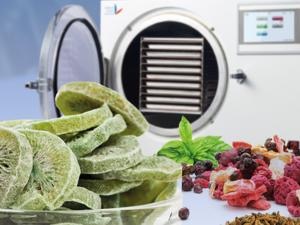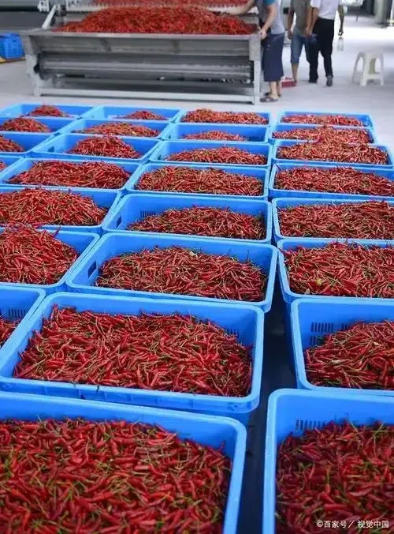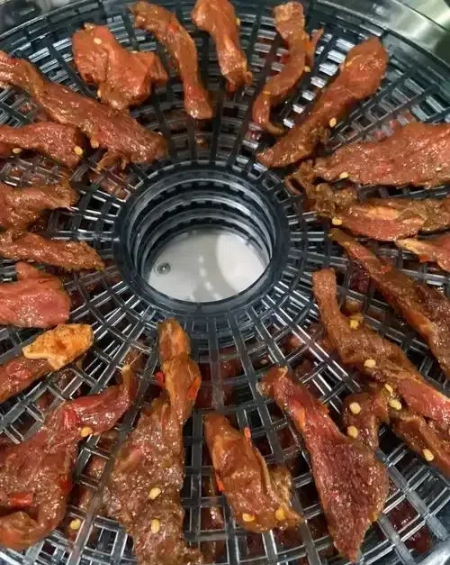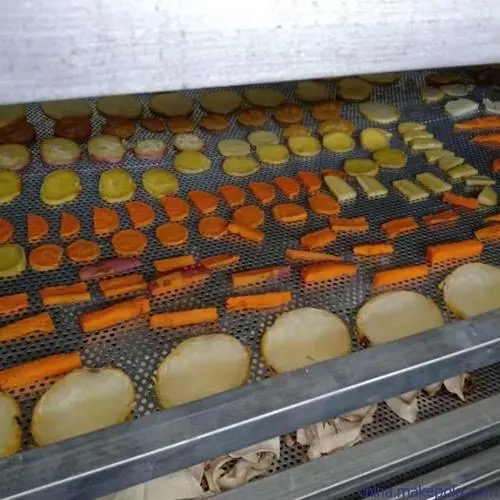
Content Menu
● Introduction
● What Is a Food Dehydrator?
>> How Does a Heat Pump Dryer Work?
● Benefits of Using a Heat Pump Dryer
>> Energy Efficiency
>> Retained Nutritional Value
>> Versatility
>> Consistent Drying Results
>> Environmentally Friendly
● Choosing the Best Heat Pump Dryer on the Market
>> Capacity
>> Temperature Control
>> Energy Rating
>> Build Quality
>> Price Point
● Popular Brands Offering Heat Pump Dryers
● How to Use a Heat Pump Dryer Effectively
● Maintenance Tips for Your Heat Pump Dryer
● Common Uses of Food Dehydrators
>> Snacks
>> Jerky Production
>> Herbs and Spices
>> Pet Treats
● Comparing Heat Pump Dryers with Other Drying Methods
● Conclusion
● Frequently Asked Questions (FAQs)
>> 1. What Is the Difference Between a Heat Pump Dryer and Other Dryers?
>> 2. Can I Use a Heat Pump Dryer for All Types of Food?
>> 3. How Long Does It Take to Dehydrate Food Using a Heat Pump Dryer?
>> 4. Are Heat Pump Dryers Noisy?
>> 5. What Maintenance Is Required for My Heat Pump Dryer?
Introduction
In recent years, the demand for food dehydrators has surged as consumers become more health-conscious and seek ways to preserve food without additives. Among the various types of food dehydrators available, heat pump dryers stand out for their efficiency and effectiveness. This article will explore everything you need to know about food dehydrators, focusing on the best heat pump dryer on the market, their benefits, features, and how they compare to other drying methods.

What Is a Food Dehydrator?
A food dehydrator is an appliance that removes moisture from food to help preserve it. By lowering the water content in fruits, vegetables, meats, and herbs, dehydrators inhibit the growth of bacteria, yeast, and mold. This preservation method allows for longer shelf life and maintains the nutritional value of the food.
How Does a Heat Pump Dryer Work?
Heat pump dryers utilize a refrigeration cycle to extract moisture from food. They operate by:
1. Circulating Air: Warm air is circulated around the food items.
2. Condensing Moisture: The moisture in the air is condensed and removed.
3. Recycling Heat: The heat generated during this process is recycled to maintain optimal drying temperatures.
This method is energy-efficient compared to traditional drying methods, making heat pump dryers an excellent choice for both home and commercial use.
Benefits of Using a Heat Pump Dryer
Energy Efficiency
Heat pump dryers are known for their low energy consumption. They can operate at lower temperatures while still effectively removing moisture from food. This not only saves on electricity costs but also reduces the carbon footprint associated with food preservation.
Retained Nutritional Value
One of the significant advantages of using a heat pump dryer is that it preserves more nutrients compared to other drying methods. The lower drying temperatures help maintain vitamins and minerals that can be lost in higher heat processes.
Versatility
Heat pump dryers can handle various types of food, including fruits, vegetables, meats, and even flowers for herbal teas. This versatility makes them suitable for both personal and commercial use.
Consistent Drying Results
These dryers provide uniform drying due to their advanced airflow systems. Unlike traditional dehydrators that may leave some parts of the food moist while others are over-dried, heat pump dryers ensure consistent results every time.
Environmentally Friendly
With their energy efficiency and ability to reduce waste through preservation, heat pump dryers are an environmentally friendly option for those looking to minimize their ecological impact.
Choosing the Best Heat Pump Dryer on the Market
When searching for the best heat pump dryer on the market, consider the following features:
Capacity
The capacity of a heat pump dryer determines how much food you can dehydrate at once. For commercial use, larger capacities are ideal, whereas smaller units may suffice for home use.
Temperature Control
Look for models with adjustable temperature settings. This feature allows you to customize drying conditions based on the type of food being processed.
Energy Rating
Check the energy rating of the dryer before purchasing. Higher-rated models will save you money in the long run through reduced energy consumption.
Build Quality
Durability is essential in any appliance. Choose a heat pump dryer made from high-quality materials that can withstand continuous use.
Price Point
While investing in a high-quality heat pump dryer may require a higher initial cost, consider it as a long-term investment that pays off through energy savings and preserved food quality.

Popular Brands Offering Heat Pump Dryers
Several brands are recognized for producing top-quality heat pump dryers:
- Brand A: Known for its innovative technology and user-friendly designs.
- Brand B: Offers a range of sizes suitable for both home and commercial use.
- Brand C: Renowned for its energy-efficient models that do not compromise on performance.
- Brand D: Provides excellent customer service and warranties on their products.
- Brand E: Focuses on eco-friendly designs that appeal to environmentally conscious consumers.
How to Use a Heat Pump Dryer Effectively
Using a heat pump dryer involves several steps to ensure optimal results:
1. Preparation: Wash and cut your fruits or vegetables into uniform pieces to promote even drying.
2. Loading: Place your prepared food in a single layer on the drying trays.
3. Setting Up: Adjust the temperature based on your specific food type; refer to your dryer's manual for guidance.
4. Monitoring: Check periodically to ensure even drying and adjust settings if necessary.
5. Storage: Once dried, store your food in airtight containers in a cool, dark place to maintain freshness.
Maintenance Tips for Your Heat Pump Dryer
To extend the life of your heat pump dryer and ensure it operates efficiently:
- Regularly clean filters and vents to prevent dust buildup.
- Inspect seals and gaskets for wear and replace them as needed.
- Follow manufacturer guidelines for maintenance schedules.
- Store your dryer in a dry area when not in use.
Common Uses of Food Dehydrators
Food dehydrators are not just limited to preserving fruits and vegetables; they have various applications:
Snacks
Dehydrated fruits like apples, bananas, and strawberries make healthy snacks that retain most of their nutrients. Similarly, vegetable chips can be made from kale or sweet potatoes.
Jerky Production
Making jerky at home has become increasingly popular. A heat pump dryer allows you to create delicious beef jerky or turkey jerky with minimal preservatives.
Herbs and Spices
You can dry herbs like basil, oregano, or thyme easily using a heat pump dryer. This method preserves their flavor better than traditional drying methods.
Pet Treats
Homemade pet treats can be made by dehydrating fruits or meats specifically tailored for your furry friends.
Comparing Heat Pump Dryers with Other Drying Methods
When considering which type of dehydrator to invest in, it's essential to compare heat pump dryers with other common methods:
| Feature | Heat Pump Dryer | Traditional Dehydrator | Oven Drying |
| Energy Efficiency | High | Moderate | Low |
| Nutrient Retention | Excellent | Good | Fair |
| Drying Speed | Moderate | Slow | Fast |
| Temperature Control | Adjustable | Fixed | Adjustable |
| Initial Cost | Higher | Lower | Varies |
As illustrated above, while traditional dehydrators might be less expensive upfront, they often consume more energy over time due to higher operational temperatures and longer drying times. Oven drying can be quick but lacks efficiency and control over temperature settings.
Conclusion
Investing in a heat pump dryer can significantly enhance your food preservation efforts while providing numerous benefits such as energy efficiency and retained nutritional value. As you search for the best heat pump dryer on the market, consider factors like capacity, temperature control, energy rating, build quality, and price point. With proper usage and maintenance, your heat pump dryer will serve you well for years to come.
In summary, whether you're a home cook looking to preserve seasonal fruits or a commercial producer aiming to maximize efficiency, understanding how these machines work will help you make informed decisions about your purchase.

Frequently Asked Questions (FAQs)
1. What Is the Difference Between a Heat Pump Dryer and Other Dryers?
Heat pump dryers use refrigeration technology to remove moisture at lower temperatures compared to traditional dryers that rely solely on heating elements.
2. Can I Use a Heat Pump Dryer for All Types of Food?
Yes! Heat pump dryers are versatile enough to handle fruits, vegetables, meats, herbs, and more.
3. How Long Does It Take to Dehydrate Food Using a Heat Pump Dryer?
Dehydration times vary depending on the type of food and thickness but generally range from 4 to 12 hours.
4. Are Heat Pump Dryers Noisy?
Most modern heat pump dryers operate quietly compared to traditional models; however, noise levels can vary by brand and model.
5. What Maintenance Is Required for My Heat Pump Dryer?
Regular cleaning of filters and vents is essential; additionally, inspect seals periodically and follow manufacturer maintenance recommendations.












